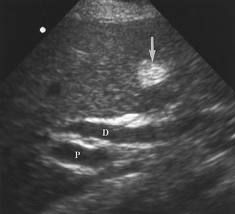![]()
![]()
![]()
Use LEFT and RIGHT arrow keys to navigate between flashcards;
Use UP and DOWN arrow keys to flip the card;
H to show hint;
A reads text to speech;
19 Cards in this Set
- Front
- Back
|
ALT
|
alanine aminotransferase – enzyme of the liver
|
|
|
AST
|
aspartase aminotransferase – enzyme of the liver
|
|
|
bilirubin
|
broken down product of hemoglobin that is excreted by the liver and stored by the gall bladder
|
|
|
BUN
|
blood urea nitrogen
|
|
|
diffuse hepatocellular disease
|
affects hepatocytes and interferes with liver function
|
|
|
epigastrium
|
between right and left hypochondrium that contains part of liver, duodenum, and pancreas
|
|
|
falciform ligament
|
extends from umbilicus to diaphragm sagittaly and contains the ligamentum teres
|
|
|
hepatocellular disease
|
– lever cells or hepatocytes primary problem
|
|
|
hepatocyte
|
parenchymal liver cell
|
|
|
hepatofugal
|
flow away from liver
|
|
|
hepatopetal
|
flow toward liver
|
|
|
left hypochondrium
|
left upper quadrant of abdomen that contains left lobe of liver, spleen, and stomach.
|
|
|
Ligamentum teres
|

along with falciform ligament, divides medial and lateral segments of left lobe of liver
(arrow) |
|
|
Ligamentum venosum
|

separates left lobe from caudate lobe
(short arrow) |
|
|
Main lobar fissure
|
boundary between left and right lobes of liver, extending from portal vein to gallbladder neck
|
|
|
main portal vein
|
enters liver at porta hepatis and divides into a left and right branch. The right branch is larger. Formed by the superior mesenteric vein and the splenic vein. Carry blood from bowel to liver.
|
|
|
right hypochondrium
|
right upper quadrant of the abdomen that contains the liver and the gallbladder.
|
|
|
hepatic veins
|
course between the hepatic lobes, and have left, right, and middle branches. These become larger as they drain into the IVC.
|
|
|
Primary functions of the liver:
1. 2. 3. 4. |
1. Metabolism - glucose production
2. Digestion - bile secretions 3. Storage - iron & vitamins 4. Detoxification - drugs and proteins |

